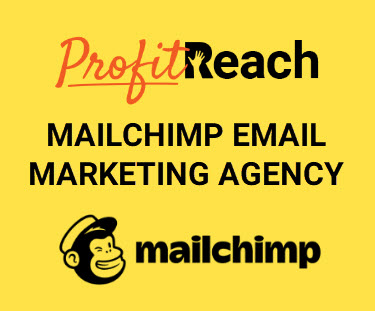
The other day a guy from Belgium got in touch. “I need some email marketing help with Mailchimp.” he said. Email marketing consultant Mark Reynolds from GrowthbyTrust, a Leamington digital marketing agency, offered his advice…
What did this gentleman want?
He simply wanted me to show him how to set up a segmented automated e-mail series in Mailchimp. As an email marketing agency we get quite a few requests like this.
- The client had a form on his website which he planned to integrate with Mailchimp.
- He wanted the prospect to fill in the form and state whether they are a B2B or B2C customer.
- After submitting the form the B2B customers need to get a series of automated e-mails.
I want to share the steps we conveyed to him because email marketing segmentation is hugely powerful and I know this can help you too.
With email segmentation you can create emails that people love and engage with. You can provide human, helpful, valuable experiences to your contacts. And when you send great emails, you nurture your contacts into happy customers and grow your business.
BTW we’re an email marketing agency in Leamington Spa, Warwickshire, near Coventry, UK. We also have an office in Chipping Sodbury, nr Yate, Bristol. If you need help with your email marketing strategy or with Mailchimp/Active Campaign, please get in touch. We work with companies across the UK, Europe and USA.
NB. This work was carried out in 2019. The screenshots below may be slightly different to the current interface because as time moves on, Mailchimp changes its look.
Here’s what I told our client from Belgium.
How to Set Up A Segmented Automated E-mail in Mailchimp
We also provided our client with a walkthrough video to help them understand what to do. We couldn’t publish it here as it contained private information, but I hope you get something from this tutorial below.
Create B2C – B2B group
Go to Audience > Manage Contacts > Groups
On the Groups screen: create the new group (find out how to do this on the Mailchimp website)
When you view the audience list you can then see the new field appear. In my example there’s no content in that field. But if a new user submitted a form, then you would see the text B2B for example.
Next Step: Create The Form
Now that you have the B2B/B2C group set up, it’s time to create the form and to make sure the fields are correctly displaying.
Go to Audience > Signup Forms > Form Builder
The B2B/B2C field shows up in the form below.
Now that you’ve checked and amended the sign up form, it’s time to embed the form on your website. Go to the Embeddable Forms section.
There are lots of different ways to embed a Mailchimp form on your website. You can see the various ways on the tabs, eg Classic. You can find more details on adding a form to your website on the Mailchimp site here.
Now you’re happy with the form and how you’ve set it up, copy the code and paste it onto your website.
Next Step: Create your Automations
Now go to the Automations section in Campaigns
Click on ‘Create an Automation’
Click on ‘CUSTOM’
Then choose your Campaign name and audience name.
Next it’s time to edit the criteria to segment your email series. It’s important to understand automation triggers. You can find out more about setting up an automation series here.
Start the automation.
Now you’ve started the B2C automation, it’s time to set up the second B2B automation. Repeats the above steps.
We also provided our client with a walkthrough video to help them understand what to do. We couldn’t publish it here as it contained private information, but I hope you got something from this tutorial.
Need Mailchimp Help?
As an email marketing agency, we continue to work on similar jobs. Our founder Mark Reynolds can help you get results through email segmentation in Mailchimp or Active Campaign. Get in touch if you need help with email segmentation in Mailchimp or Active Campaign.

